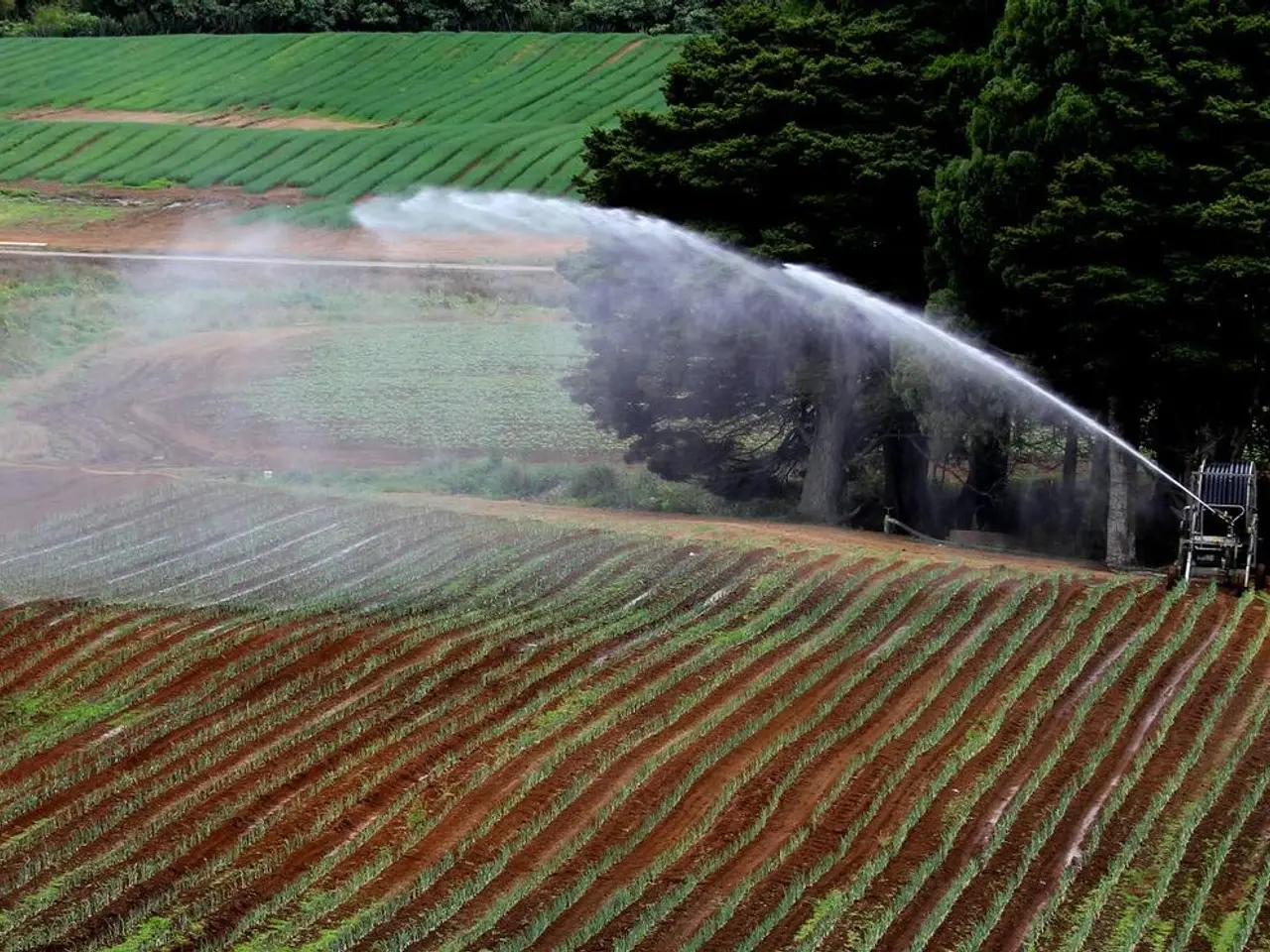Essential Insights into Cover Cropping Basics
In the pursuit of sustainable farming practices, cover crops are emerging as a valuable asset. These crops, when managed correctly, can improve soil quality, control erosion, and supplement or even replace purchased inputs.
Selecting Region-Appropriate Cover Crops
The first step in integrating cover crops into modern farming systems is choosing species that are well-adapted to local conditions. Species such as rye, clover, vetch, cowpea, and buckwheat are good options, each offering unique benefits such as maximizing biomass production and providing specific soil benefits [1][5].
Rotating Cover Crops
Rotating different cover crop species over time is another crucial practice. This approach achieves diverse soil health benefits, including nutrient cycling, pest suppression, and organic matter enhancement [1][3].
Timing Cover Crop Planting
Timing is everything when it comes to cover crops. Planting them strategically, often immediately after harvesting the main crop or during off-seasons like winter, allows them to capture nutrients, maintain living roots, and prevent erosion during fallow periods [1][2].
Terminating Cover Crops
It's essential to terminate cover crops before they set seed to avoid interference with the main cash crop while maximizing residue incorporation for soil organic matter [1].
Incorporating Cover Crop Residues
Incorporating cover crop residues into soil through reduced or conservation tillage practices helps maintain soil structure, enhance water retention, and build carbon stocks, reducing reliance on synthetic fertilizers and pesticides [1][3].
Leveraging Cover Crops' Nutrient Cycling
Leguminous cover crops, such as clover and vetch, can partially replace purchased nitrogen fertilizer inputs by biologically fixing atmospheric nitrogen and recycling residual soil nutrients [3][5].
Integrating Cover Crops into Crop Rotations and Grazing Systems
Integrating cover crops into crop rotations and grazing systems promotes biodiversity, natural pest control, improved forage availability, and additional revenue streams [2][3].
Minimizing Soil Disturbance
Minimizing soil disturbance with no-till or reduced tillage systems, combined with cover crops, helps sustain soil microbial health, reduce erosion, and increase carbon sequestration [1][3].
Other Benefits of Cover Crops
Beyond these benefits, cover crops also improve soil tilth, enhance soil biology, and improve the organic matter content of the soil [4]. Clovers, for instance, may require a small-seeder attachment for planting, and if a legume is planted that has not been grown before, the proper inoculant should be added when seeding [4].
The Economics of Cover Crops
The economics of using cover crops can be calculated by comparing the savings from purchased nutrients and herbicides against the additional cost of using cover crops. As the cost of fertilizer and herbicides continues to increase, the benefits of using cover crops in a sustainable farming system will become more attractive to modern farmers [2].
For more information on cover crops, visit the University of California Sustainable Agriculture Research and Education Program at asi.ucdavis.edu/programs/sarep.
[1] Sustainable Agriculture Research and Education Program. (n.d.). Cover Crops. Retrieved from asi.ucdavis.edu/programs/sarep/cover-crops
[2] National Sustainable Agriculture Information Service. (n.d.). Cover Crops. Retrieved from attra.ncat.org/cover-crops
[3] Rodale Institute. (n.d.). Cover Crops. Retrieved from rodaleinstitute.org/resources/cover-crops/
[4] University of Illinois Extension. (n.d.). Cover Crops. Retrieved from extension.illinois.edu/cover-crops
[5] University of Wisconsin Extension. (n.d.). Cover Crops. Retrieved from extension.wisc.edu/agroforestry/cover-crops
- In the pursuit of sustainable agriculture and home-and-garden practices, cover crops like rye, clover, vetch, cowpea, and buckwheat can be integrated, each offering nutrient cycling, soil improvement, and pest suppression benefits.
- By rotating cover crop species and timing their planting strategically, farmers can achieve various gains such as improved soil health, increased water retention, and reduced reliance on synthetic fertilizers and pesticides.
- Farmers should terminate cover crops before they set seed to prevent interference with main crops while maximizing residue incorporation, aiding in soil organic matter building.
- Incorporating cover crop residues into the soil through reduced or conservation tillage practices can lead to improved soil structure, enhanced water retention, and carbon sequestration, promoting sustainable-living and fitness-and-exercise through organic, health-and-wellness produce.
- Leguminous cover crops like clover and vetch can partly replace purchased nitrogen fertilizer inputs by biologically fixing atmospheric nitrogen and recycling residual soil nutrients, contributing to a more sustainable lifestyle.
- Integrating cover crops into crop rotations and grazing systems encourages biodiversity, natural pest control, enhanced forage availability, and additional revenue streams while fostering a lifestyle that emphasizes sustainable living and wellness.




